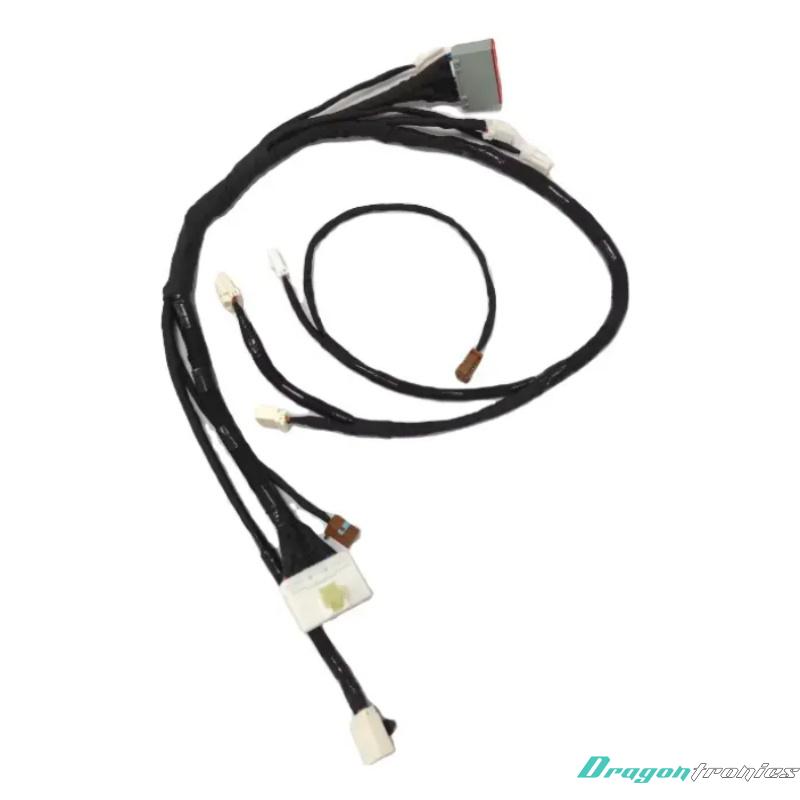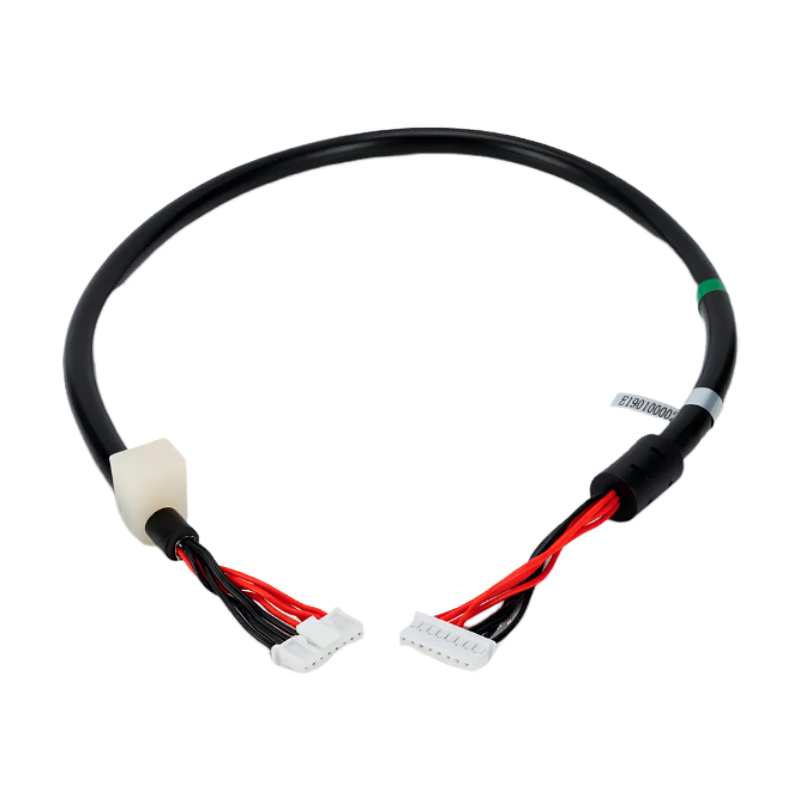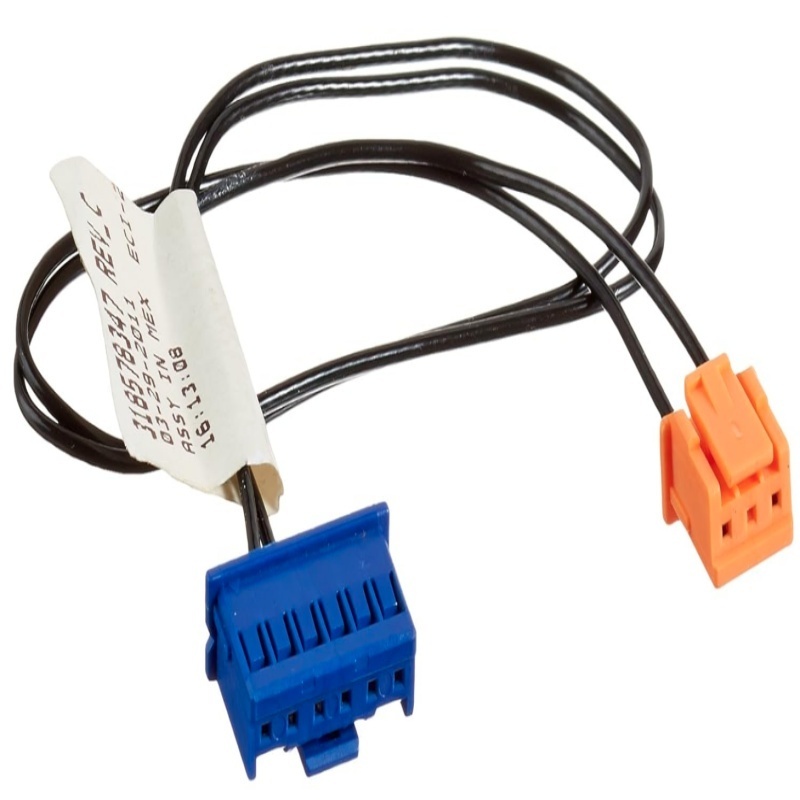Electrical Wire Harness and Consumer cable
Wiring harness kits wire harness for washing machine
- Product description: Wiring harness kits wire harness for washing machine
A wiring harness kit or wire harness for a washing machine is a pre-assembled bundle of electrical wires, connectors, and components designed to deliver power and signals to various parts of the washing machine. This kit typically includes all the necessary wiring for the different electrical functions of the appliance, including motor control, water temperature regulation, sensors, switches, and more. The wiring harness simplifies the process of assembling or repairing a washing machine by providing a ready-made, organized set of electrical connections.
Components of a Wiring Harness for a Washing Machine:
1. Wires: The main component of the harness, these wires are insulated copper or aluminum conductors that carry electrical power and data to different parts of the machine. Wires are typically color-coded for easy identification.
2. Connectors: These are plastic or metal pieces that connect the various wires to key components of the washing machine, such as the motor, control panel, door lock, water valves, etc. Connectors ensure secure, reliable electrical connections.
3. Terminals: These are small metal connectors at the ends of wires that allow the wires to be securely attached to other components in the machine. For instance, wires might be terminated with spade connectors, ring terminals, or pin terminals that fit into a specific part of the machine.
4. Fuses or Circuit Breakers: In some wire harness kits, you may find fuses or circuit breakers that protect the machine’s electrical components from overcurrent, preventing damage or fire hazards.
5. Cable Sleeving: The individual wires in the harness may be bundled together and protected by a flexible outer covering, typically made of plastic or fabric, to prevent wear, abrasion, and short circuits, especially in areas of the washing machine that may be subject to mechanical stress or vibration.
6. Grounding Wires: These wires are used to ground the electrical system to prevent electrical shocks or damage caused by surges or faults.
Key Functions of the Wiring Harness in a Washing Machine:
1. Power Supply: The wiring harness delivers power from the electrical outlet to the washing machine’s internal components, such as the motor, control board, water pump, and heating element.
2. Control Panel Connections: Wires from the harness connect the control board (which allows the user to select cycles, adjust settings, etc.) to other parts of the washing machine, like the door lock and sensors. The wiring ensures that the control panel can send signals to the machine's various parts, activating the wash cycles.
3. Motor Control: The harness carries signals and power to the washing machine's motor, allowing it to rotate the drum during the washing and spinning cycles.
4. Water Valve Control: The harness includes wires that control the water inlet valves, which regulate the flow of water into the washing machine during different cycles (wash, rinse, etc.).
5. Door Lock/Interlock: Modern washing machines have a door lock mechanism to ensure that the door remains securely shut during operation. The harness connects the door lock switch or interlock sensor to the control board to enable safe operation.
6. Temperature and Sensor Connections: Some wire harness kits also have wiring for temperature sensors, water level sensors, or other monitoring devices to ensure that the washing machine operates properly, such as adjusting the water temperature or stopping the cycle when the water reaches a certain level.
7. Pump and Drain System: Wires in the harness also connect to the pump and drain system to control the draining of water from the machine after washing or rinsing.
Why Use a Wiring Harness Kit for a Washing Machine?
1. Simplified Installation: Instead of manually wiring individual components, a harness kit provides a pre-assembled solution, making the installation or replacement process much faster and more straightforward.
2. Reduced Risk of Errors: Wiring harness kits are designed for specific washing machine models, ensuring that each wire is routed to the correct component. This reduces the risk of incorrect wiring, which can lead to malfunctions, shorts, or safety hazards.
3. Improved Durability: Wiring harness kits are built to withstand the vibrations, moisture, and high temperatures found in washing machines. The wires and connectors are typically insulated and protected to prevent damage.
4. Cost-Effective Repair: If a wiring issue arises, rather than replacing individual wires or components, a wiring harness kit provides a cost-effective solution for repairs or maintenance, as it often includes all the necessary wiring in one package.
5. Organization: The wiring harness keeps all the wires bundled and organized, reducing clutter inside the appliance and making it easier to troubleshoot or perform repairs.
When to Use or Replace the Wiring Harness Kit in a Washing Machine:
· Faulty wiring: If the washing machine isn't operating correctly or showing signs of electrical problems (e.g., failure to start, malfunctioning control panel, or unresponsive motor), the wiring harness could be damaged or faulty.
· Repairing or replacing components: If components like the motor, control board, pump, or water valves need to be replaced, the wiring harness might also need to be replaced or reconnected.
· Upgrades or custom modifications: In some cases, technicians might replace or upgrade the wiring harness to accommodate new parts or improve performance.
In summary, a wiring harness kit for a washing machine is a pre-assembled set of electrical wires, connectors, and components that simplifies the electrical installation and repair process. It ensures proper functionality and safety of the washing machine's various systems by providing a reliable, organized solution for powering and connecting all the electrical parts.
Categories
Latest News
Contact Us
Contact: Fiona Wu
Phone: 86 - 173 28414 818
Tel:
Add: 20, Changtian Road, Hengli, Dongguan, Guangdong, 523852, China




 Lankecms
Lankecms lankecms
lankecms
 Lankecms
Lankecms